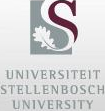This Women's Month, we're celebrating the academic staff at Stellenbosch 肆客足球 (SU) who are shaping minds and inspiring excellence through their teaching. These remarkable educators bring passion, innovation and dedication to the classroom, helping students thrive and succeed. Their stories reflect the impact of women at the heart of SU's academic community.
Munira Hoosain is a senior lecturer and PhD scholar in the Division of Occupational Therapy of the Faculty of Medicine and Health Sciences who brings passion, innovation and purpose to her teaching. She teaches and supervises research by both undergraduate and postgraduate students in the Faculty. A recipient of SU's Teaching-Learning-Assessment Awards as well as a Research Award, she combines classroom leadership with community impact and international collaboration. From the Cape Flats to global fellowships, her journey reflects a deep commitment to socially responsive, inclusive and transformative higher education.
Can you tell us a bit about your background?
I grew up in Grassy Park on the Cape Flats. My parents were not very educated – my dad had a Grade 4 education, and my mom a Grade 8. However, my family instilled a love of learning. We frequented the library every week and were expected to learn from our older siblings, and in turn teach our younger siblings. This culture of playing 'school-school' in my early childhood fostered a love of teaching and learning, which I believe led me to a career in academia. While there was no family funding for higher education (I was an NSFAS student), I saw myself at university and applied to every funding avenue available to make this happen.
In addition to this, my father's death when I was three years old meant that I grew up with a single mother. This reinforced the importance of education to secure a good income to support myself and my family in any eventuality.
Did you have any role models who left a lasting impression on you as a learner or educator?
My favourite teachers at Grassy Park High School were Mr Yusuf Johnson and Mr Yaasien Kerbelker. They used innovative teaching methods and genuinely cared about their students. Mr Johnson, my mathematics teacher, encouraged discovery and even gave up his evenings to teach higher-grade math. Mr Kerbelker, my biology teacher, connected with students through personal stories and made complex concepts easy to grasp.
During my undergraduate studies, I was deeply influenced by Profs Elelwani Ramugondo and Lana van Niekerk. Elelwani introduced us to decolonial ways of thinking long before it became a trend, encouraging us to question dominant narratives and draw on our lived experiences. Lana's vision and leadership in occupational therapy in the Global South continue to inspire me. It's an incredible honour to now work alongside her at SU.
Is there a particular subject area that you especially enjoy teaching?
I feel very strongly about decolonisation in higher education. I believe we do so much of this naturally as critical South Africans, but clearly there is more that we can unlearn and critique from the Global North to tailor our teaching to the more collectivist culture in South Africa. We can also do more to draw on indigenous knowledge, particularly in health professions education.
What does it mean to you to be a woman in academia today?
As a 44-year-old, I am gratified to see that we have made progress in recognising the value of women in the workplace, and particularly in positions of power. In being our best selves unapologetically, we create space for others who see themselves in us. Representation is important. Fresh blood and new ideas are important. I make an effort every day to listen to opinions that differ from mine, and I reevaluate my own assumptions if needed.
How do you incorporate technology in your teaching?
One of my first projects in academia was creating local videos of actual interactions between occupational therapists and their clients. These videos are invaluable for students to experience contextually relevant practice before they enter clinical work themselves, in contrast to other clinical videos that are usually from the Global North.
What is the biggest reward of being a lecturer at SU?
I often say that I have the best job in the world, as I am paid to learn. Part of my job is keeping up to date with the latest scientific research and sharing it with my students and peers. This is quite a privilege. It is also an honour to play a part in the lives of young adults, helping them to develop into socially responsive professionals who serve others to the best of their ability.
What advice would you give to younger women entering the teaching profession today?
Find a mentor – or two or three. We can learn so much from women who have walked the path before us and are willing to support those just starting out. I've been fortunate to learn from incredible mentors like Profs Nicola Plastow, Laila Asmal, Christine Lochner and Gail Wyatt.
It's also important to find peers who can walk the journey with you, share resources and commiserate when that journal article or funding application gets rejected. In my first year at SU, I attended almost every event I could, online and in person. It helped me find my people and understand the institution.
Celebrate both successes and failures. Failures mean that you are trying and learning, and they are critical on the road to success.
PHOTO: Stefan Els
?

